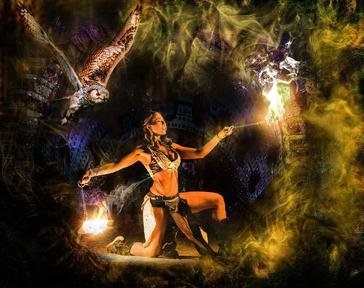Quiz Answer Key and Fun Facts
1. This dance is a little like the waltz, with the difference lying in the time signature used in its music. Can you work out its name from the photo clue?
2. This dance, which seldom allows its dancers time to pause and catch their breaths, is given which name related to the photo clue?
3. The name of this dance translates to double-step in English. Can you work out its Spanish name?
4. If you heard the rhythm, "ONE, two, BEAT-beat-beat, ONE, two, BEAT-beat-beat", what is being performed?
5. Imagine passion on the dance floor, close body contact with your partner, a rose perhaps held between your teeth, a pounding rhythm - and what dance do you have?
6. Can you name this beautiful, graceful dance, suggested by this national dish, that was introduced to the European world in the late 1700s?
7. This exciting dance form is associated with an item of clothing that the girl in the photo is wearing. Can you name it?
8. Can you name the dance associated with this photo?
9. What is this dance with a name suggested by the photo clue?
10. Can you work out the name of this ballroom dance based on the opposite photo?
Source: Author
Creedy
This quiz was reviewed by FunTrivia editor
looney_tunes before going online.
Any errors found in FunTrivia content are routinely corrected through our feedback system.

